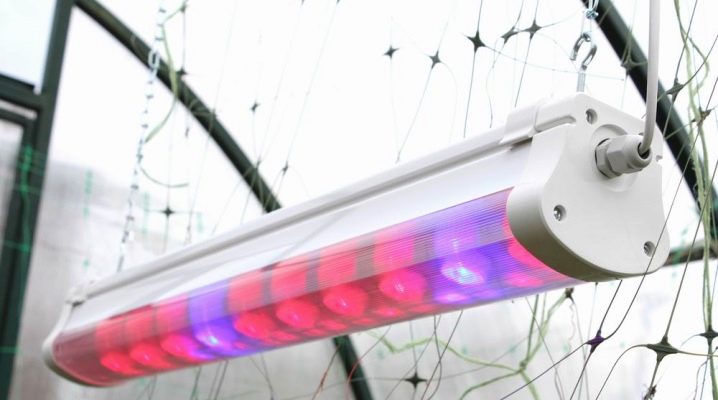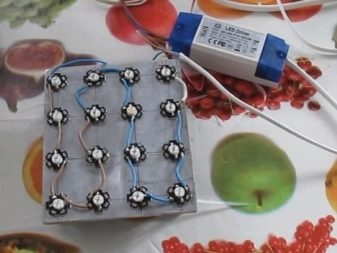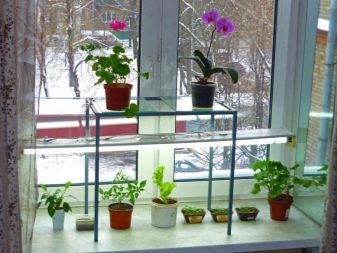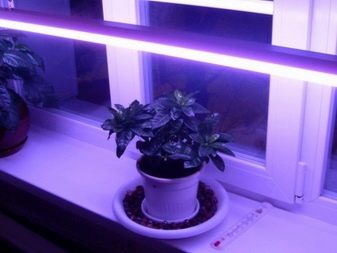How to make a phytolamp with your own hands?

Normal vital activity of plant organisms requires not just lighting, but light in a certain spectrum. The design of the lighting fixtures may vary, since different parts of the plant require different lengths and shades of light. Luminaires with incandescent lamps are practically useless for indoor flora. The yellow-green shades emitted by them do not affect the development of vegetation. Another disadvantage is overheating and burns. Ideal shades of the light source are violet, blue, red. They are combined in so-called phytolamps.


Design features
Depending on the financial capabilities, the phytolamp is purchased in specialized stores or made by hand. They do an excellent job of stimulating the growth, flowering and ripening of fruits of indoor plants, as well as growing crops in greenhouses and greenhouses.
First of all, you need to understand the concept of the spectrum of light, then it will be easier to navigate which lamp is suitable for solving the necessary tasks.


The sun provides a spectrum of light that is not interrupted. Phyto-devices are equipped with LED or fluorescent lamps that change the light spectrum. Here's how different shades of light affect the flora:
- blue and purple perfectly strengthen the roots, stimulate the ovary of the flower;
- Orange promotes accelerated growth and maturation;
- Red - allows seeds to germinate quickly, has a beneficial effect on flowering.
In addition, ultraviolet light in limited quantities does not allow the plant to grow too much, but its effect must be controlled, as exceeding doses will burn the greens.
Distinctive features of the lamps are associated precisely with the color variety of LEDs. They can combine several shades or be with one-color, two-color, UV or white LEDs. Many models are equipped with power controls, shades, brightness, make it possible to combine two or more shades at the same time.


Among the advantages are:
- availability - you can buy materials for manufacturing, as well as a ready-made set, in any specialized store;
- the ability to create such a device on your own allows you to save money;
- low energy consumption - almost 10 times less than from conventional lamps;
- are not sources of increased danger in terms of fires;
- moisture resistant - you can not be afraid to splash when watering;
- small space for heating, while sufficient lighting area;
- can be installed in different variations in height and distance from vegetation;
- long service life;
- there are no toxic substances in the composition, that is, they are absolutely harmless to humans and other living beings;
- when installed correctly, do not irritate the eyes.


Necessary tools
Making a phytolamp with your own hands makes sense if you plan to use it on a non-industrial scale. It is not always advisable to purchase a phyto-lamp for indoor plants. Moreover, manufacturing does not require very serious professional skills.
What materials will be required:
- LEDs, LED strips;
- base or stand for installation;
- UV device driver or power supply;
- wires for connecting copper-flexible type;
- reflector;
- hot glue and paste;
- plug, cord.


Various sources are used to make a quality lamp.
- Special LEDs that have different emission and power spectra. They are easiest to install yourself.
- You can use both bright and low-power diodes, but the latter will require much more. This will affect the complexity of the work.
- LED strips of red and blue shades, long-wavelength - 630 nm, medium-wavelength - up to 465 nm.
- Ribbon equipped with RGB controller. This is the most simplified version and does not have enough power.


It is necessary to calculate the amount of light, the level of which differs depending on the season, the presence of windows and their location in the room. The sufficient power of phytolamps, on average, is guided by the following indicators:
- for the windowsill - about 40 W per sq. m;
- with a single light source - about 80 W per sq. m;
- in closed grow boxes - 150 W per sq. m.
In all situations, the location of the lamps should be uniform and equidistant over vegetation. The optimal distance is from 25 to 40 cm. It is important to provide for the possibility of changing shades and brightness at different stages of plant development. In a simplified version, set the average value and install a power supply that regulates the power depending on the type of LED.


But the adjustment will give more opportunities for control, which means that the impact on the plant will be the most favorable. This function will be performed by the driver or power supplies for each shade. Check if the output voltage matches the LED type. With regard to power, the units should differ in the ratio of 2 to 1 red and blue spectra, and also be equipped with their own switch.
As for the base, it can be an old lamp, a plastic or nylon box. Plywood, board, aluminum, and other materials will do. The main thing is that the backlight can be positioned so that the radiation does not enter the eyes, and the base does not touch the batteries and other heating sources. In addition, it should be possible to adjust the height, and the size should be related to the area of the vegetation. Installation is carried out on brackets, hangers, cables, holders, stands.


Step-by-step lamp making
We offer you a master class on the manufacture and installation of a volumetric LED phyto-lamp and LED strip lighting.
Making luminaires using the following procedure is quite simple:
- we clean, degrease the base, stand;
- we distribute two- or one-color LEDs, alternating them according to patterns 3 to 1 or 2 to 1 red and blue, respectively;
- glue with special glue;
- then it remains to collect everything with a soldering iron.


How to install LED strip
To connect different sections of tapes, use a solder or connectors of a special type. It is not recommended to bend it, as this can damage the conduction of the current. A bi-color or two-spectrum tape is attached to a panel made of aluminum material. The surface is preliminarily cleaned and treated with a degreaser. The ribbons are cut without damaging the soldering, then the film is removed from the adhesive surface, pressed against the base. We connect the driver or power supply, cord with plug and switch for in-line design.
There is only one drawback of the resulting device - the impossibility of switching separately the spectrum of red and blue shades. It can also be used for an aquarium.


Assembly and installation recommendations:
- place them above the seedlings, without indenting, since there is no heat radiation from the device;
- use a white foil or sheet as a reflector that scatters light;
- if possible, place the light so that it falls not only straight, but also at an angle;
- check the operating status of the LEDs in advance using a tester or an additional resistor;
- checking the tape is carried out by connecting the power supply;
- use a soldering iron with a power of no more than 25 W, otherwise there is a risk of overheating of the diodes;
- do not use acid - this will damage the wires and short circuits.


Installation and build errors
Among the most common missteps is purchasing cheap LEDs. Unfortunately, the efficiency of poor quality diodes will be very low. If you succumb to the temptation to buy cheap diodes, then there is a possibility that the light flux and radiation spectrum will be insufficient. Irresponsible manufacturers benefit from the fact that it is simply impossible to check these parameters without special devices. You should be especially careful when making purchases from Chinese sites, where fakes are often given for high-quality models.
Low-quality elements and assembly are also able to neutralize all efforts. Be sure to check that the structure is securely fastened and its parts are strong. You should not choose materials for the case that prevent air from circulating normally, and an unstable power supply that does not provide an uninterrupted supply of current to the diodes. Don't try to save money by choosing a driver.


How to use?
A huge plus of phytolamps is that they can be safely used not only in greenhouses, but also at home, in an apartment. They can be installed on a windowsill, matched to shelves or shelves. This type of additional lighting is used to grow completely different crops from strawberries to orchids.
Depending on the stage of seedling growth, a certain spectrum is required:
- from sowing to the appearance of the first leaves, a blue and red shade should be set in proportions of 1 to 2;
- after a dive, a break for several days should be allowed to allow the plant to take root without stimulation;
- in the remaining period before disembarkation, the scheme of applying 1 to 1 blue and red is suitable.
The duration of the lighting depends largely on weather conditions, the availability of natural light, and the season. If sunlight does not penetrate into the room or penetrates in deficiency, you will have to use them almost all day. Sometimes it is enough to switch on in the morning or in the evening - to extend the daylight hours. Plants of flower and vegetable species require 11 to 17 hours of light.


It is necessary to monitor the condition of the vegetation, and it is able to tell itself whether there is an excess of lighting. If the leaves have risen, trying to close, it is time to end the emission of light.
Buy or do it yourself?
There can be no doubt about the need to install phytolamps in closed rooms. The only question is whether to buy it in a store or do it yourself. The main advantage of a home-made device is its low cost, especially since LEDs and tapes can be ordered for a small price, and use improvised means as a basis. The main disadvantage of such devices is the narrow radiation spectrum, the absence of ultraviolet light.
For information on how to make a phytolamp with your own hands, see the next video.













The comment was sent successfully.